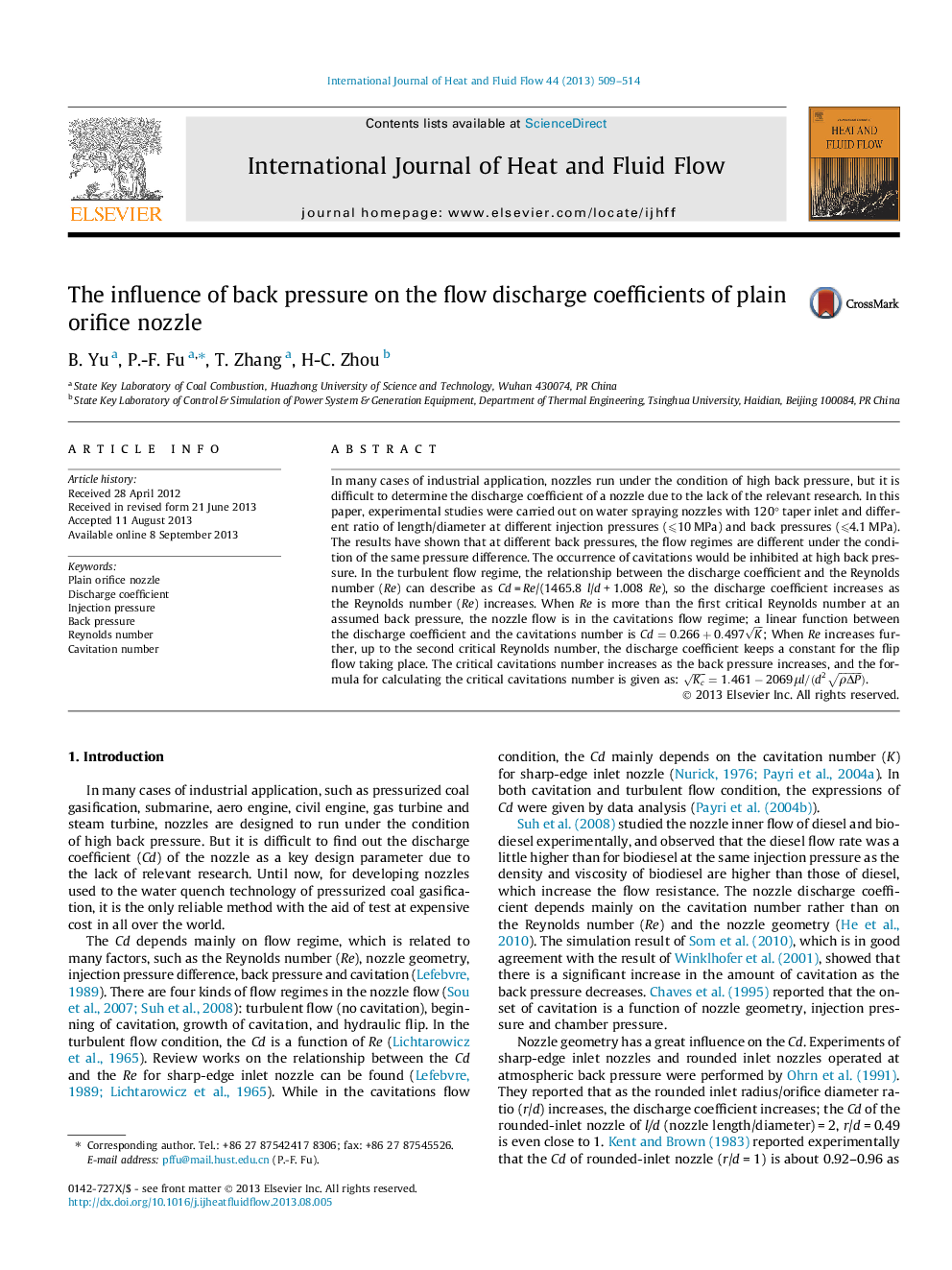| کد مقاله | کد نشریه | سال انتشار | مقاله انگلیسی | نسخه تمام متن |
|---|---|---|---|---|
| 655384 | 1457637 | 2013 | 6 صفحه PDF | دانلود رایگان |

• At different back pressures the flow regimes are different under the condition of the same pressure difference.
• In the turbulent flow regime, the discharge coefficient increases as the Reynolds number increases.
• In the cavitations flow regime, a linear relationship between the discharge coefficient and the cavitation number exists.
• In the flip flow regime, the discharge coefficient stays approximately constant.
• The critical cavitations number increases as the back pressure increases.
In many cases of industrial application, nozzles run under the condition of high back pressure, but it is difficult to determine the discharge coefficient of a nozzle due to the lack of the relevant research. In this paper, experimental studies were carried out on water spraying nozzles with 120° taper inlet and different ratio of length/diameter at different injection pressures (⩽10 MPa) and back pressures (⩽4.1 MPa). The results have shown that at different back pressures, the flow regimes are different under the condition of the same pressure difference. The occurrence of cavitations would be inhibited at high back pressure. In the turbulent flow regime, the relationship between the discharge coefficient and the Reynolds number (Re) can describe as Cd = Re/(1465.8 l/d + 1.008 Re), so the discharge coefficient increases as the Reynolds number (Re) increases. When Re is more than the first critical Reynolds number at an assumed back pressure, the nozzle flow is in the cavitations flow regime; a linear function between the discharge coefficient and the cavitations number is Cd=0.266+0.497K; When Re increases further, up to the second critical Reynolds number, the discharge coefficient keeps a constant for the flip flow taking place. The critical cavitations number increases as the back pressure increases, and the formula for calculating the critical cavitations number is given as: Kc=1.461-2069μl/(d2ρΔP).
Journal: International Journal of Heat and Fluid Flow - Volume 44, December 2013, Pages 509–514